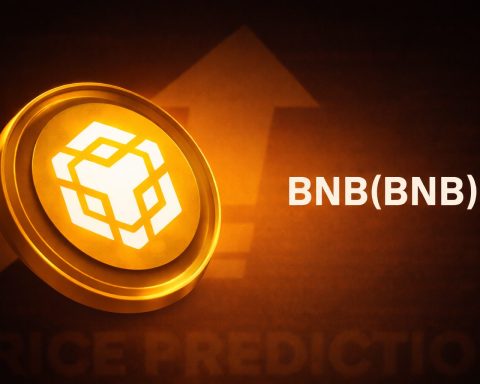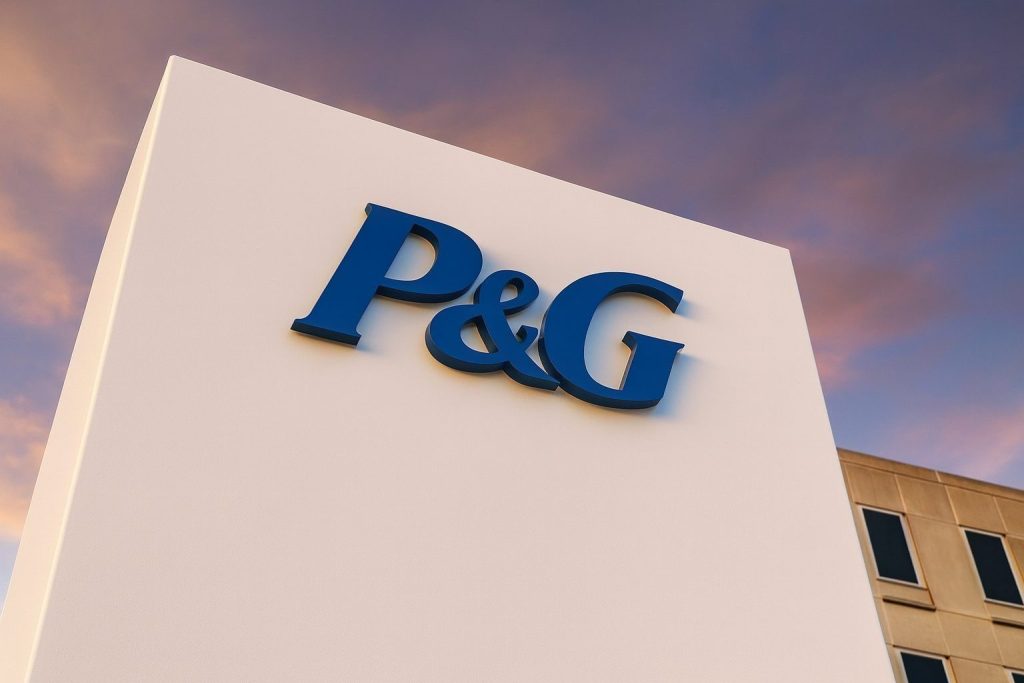VALE stock edged higher on November 25, 2025 as investors weigh a strong Q3 earnings beat, stable iron ore prices and the upcoming Vale Day 2025 investor event in London.
VALE stock snapshot for November 25, 2025
Shares of Vale S.A. (NYSE: VALE), the Brazilian iron ore and base-metals giant, were trading around $12.21 in Tuesday afternoon trading on November 25, 2025, up roughly 1% from the prior close.
Based on the latest intraday data: [1]
- Last price: about $12.21
- Day’s range: roughly $12.15 – $12.30
- Previous close: about $12.09
- Market cap: around $55 billion
- Trailing P/E ratio: about 9.8
- 52‑week range:$8.06 – $12.60
- 50‑day moving average: about $11.46
- 200‑day moving average: about $10.41
Technically, that puts VALE: [2]
- Trading near the top of its 52‑week range,
- Sitting above both its 50‑day and 200‑day moving averages,
- With a relatively low beta of ~0.8, suggesting lower volatility than the broader equity market.
The move higher today comes as investors continue to digest a strong Q3 2025 earnings beat, relatively stable iron ore prices around $105 per tonne, and a new round of analyst upgrades and institutional buying. [3]
Iron ore prices: a steady but fragile backdrop
For any VALE stock analysis, iron ore is the main macro driver.
- Benchmark iron ore prices are trading around $104–105 per tonne as of November 25, 2025. [4]
- Since early August, futures have largely held in a narrow band between roughly $100 and $108, even as sentiment toward China’s property and steel sectors has remained cautious. [5]
- Earlier in November, iron ore futures saw a 4–5% pullback, reflecting renewed worries about China’s demand, before stabilizing in recent sessions. [6]
Physical market data out of China’s Hebei region shows spot fines prices creeping a few yuan higher versus the prior day, hinting at modest near‑term improvement in demand, but not a boom. [7]
For Vale, this setup is mixed but workable:
- Prices are well below 2021 peaks, but
- They’re high enough that, combined with Vale’s lower unit costs, iron ore remains a high‑margin business.
As long as iron ore avoids a sharp breakdown below the current range, the macro backdrop remains supportive rather than euphoric for VALE.
Vale’s Q3 2025 results: production highs and better margins
Today’s trading still reflects the afterglow of Q3 2025 earnings, released late October, which were notably stronger than the market expected. [8]
Key highlights from the latest quarter: [9]
- Net profit: about $2.7 billion, up roughly 11% year‑over‑year, beating analyst estimates by a wide margin.
- Adjusted EBITDA: around $4.4 billion, up about 20%+ year‑on‑year, helped by stronger iron ore prices and volume.
- Revenue: roughly $10.4 billion, up about 9% versus the same quarter last year.
- Iron ore production: about 94–94.4 million tonnes, Vale’s strongest quarter since 2018, putting it toward the upper end of its 2025 output guidance.
- Iron ore sales: around 86 million tonnes, up about 5% year‑over‑year.
- Realized iron ore fines price: roughly $94 per tonne, slightly above benchmark thanks to quality premiums for its higher‑grade products.
- All‑in iron ore costs: about $53 per tonne, down around 4% year‑on‑year, reflecting lower freight costs and an improved product mix.
Base metals were also a bright spot:
- Copper production climbed mid‑single digits to around 90–91 thousand tonnes,
- Nickel output was roughly flat at ~47 thousand tonnes, while
- Vale lowered its full‑year cost guidance for both copper and nickel, citing better operational performance and supportive by‑product pricing (particularly gold). [10]
Taken together, Q3 suggests Vale is:
- Executing well operationally,
- Converting stable iron ore prices into expanding margins, and
- Building credibility around its multi‑year production targets.
These factors underpin some of the bullish analyst commentary and institutional interest that VALE is seeing this quarter. [11]
Dividend yield and valuation: why income investors watch VALE
One of the main reasons VALE catches investors’ eyes is its dividend profile, though it’s important to remember that Vale’s payout is variable and cyclical.
Data from multiple dividend trackers show that in 2025 Vale’s ADRs will have paid out about $0.72 per share across two distributions, down roughly 30–32% from the total paid in 2024 as the company rebalances payouts with cash needs and the commodity cycle. [12]
At today’s price around $12.21, that translates into a trailing dividend yield of roughly 6%, putting VALE firmly in high‑yield territory compared with many large‑cap global miners. [13]
The most recent distribution was tied to an August 13, 2025 ex‑dividend date, with investors receiving a cash payout in September that some providers classify as a special dividend/interest on capital, which helps explain small discrepancies in the reported per‑share amount (around $0.29–$0.35). [14]
On valuation, VALE screens as relatively inexpensive versus global equities and many peers: [15]
- Trailing P/E: about 9.8
- Consensus 2025 EPS estimate: around $1.85 per ADR, implying a forward P/E in the mid‑single digits at current prices.
- Return on equity: about 18%, supported by high‑margin iron ore and disciplined capital spending.
For income‑oriented investors, the combination of a near‑6% yield and a low earnings multiple is compelling—but the flip side is that Vale’s dividend is explicitly tied to cash generation and can swing significantly with iron ore prices and investment needs.
Upcoming catalyst: Vale Day 2025 in London
A big near‑term catalyst for VALE is Vale Day 2025, the company’s annual investor event.
Vale has confirmed that: [16]
- Date: December 2, 2025
- Location: London, United Kingdom
- Format: live in‑person event with a webcast, with sessions in English and simultaneous translation into Portuguese.
Historically, Vale Day has been where management updates the market on:
- Medium‑term production and cost guidance,
- Capital allocation priorities (dividends, buybacks, and growth projects),
- Progress on ESG and tailings‑safety initiatives, and
- Strategic direction for its “Energy Transition Materials” portfolio (copper, nickel and related assets).
This year, the event takes place against the backdrop of:
- Record‑near iron ore production,
- Ongoing investments to improve tailings safety and sustainability in Brazil, including a plan to invest about 67 billion reais (~$12 billion) in Minas Gerais and the dry‑processing Capanema mine restart, which eliminates the need for tailings dams at that site. [17]
Investors will watch closely for:
- Any revision to 2025–2026 iron ore volume guidance,
- Updated cost and capex frameworks in both iron ore and base metals,
- Signals on the pace and size of future shareholder returns, and
- More detail on how Vale plans to position itself for the energy‑transition metals cycle.
Positive surprises on capital returns or long‑term guidance could help support VALE’s share price beyond today’s move; disappointments on ESG or spending discipline could have the opposite effect.
Analyst sentiment and institutional interest
Recent flows and ratings suggest that professional investors remain cautiously constructive on VALE: [18]
- MarketBeat data shows Insigneo Advisory Services LLC increased its stake in Vale by about 11.6% in Q2, to roughly 220,000 shares (around $2.1 million)—one of several smaller institutions adding exposure.
- In total, hedge funds and other institutions hold just over one‑fifth of the float, leaving significant room for future institutional ownership to grow.
- On the sell‑side, a mix of global banks (including HSBC, Barclays, JPMorgan and Scotiabank) have upgraded or reiterated positive views in recent months.
- The consensus rating sits at “Moderate Buy”, with a consensus price target around $12.61, only slightly above today’s price, and individual targets in the mid‑teens for more bullish houses.
Analyst targets and ratings change frequently and are not guarantees, but they do highlight a market narrative that sees Vale as:
- Fundamentally healthy,
- Modestly undervalued on earnings,
- But still exposed to cyclical and geopolitical risks that justify some discount.
Key risks that could move VALE stock
Despite today’s strength, VALE remains a cyclical, commodity‑linked stock with several important risk factors:
- Chinese demand and steel production
- China remains the dominant buyer of seaborne iron ore. Recent reporting shows steel output under pressure even as iron ore imports head toward record levels, leaving the market sensitive to shifts in policy or construction activity. [19]
- Iron ore price volatility
- A 4–5% pullback in early November showed how quickly sentiment can turn when macro worries flare up. A deeper downturn in prices would directly hit Vale’s margins and could force lower dividends and capex re‑prioritization. [20]
- Operational and ESG risks
- Vale is still working through the long‑tail consequences of past tailings‑dam disasters in Brazil. While investments like the Capanema dry‑processing operation reduce risk, the company remains under tight regulatory and social scrutiny, with meaningful ongoing remediation costs. [21]
- Currency and political risk
- Most of Vale’s costs are in Brazilian reais, while revenues are largely in U.S. dollars, making earnings sensitive to FX swings. Political or regulatory shifts in Brazil could also affect taxation, permitting and project timelines.
- Base metals market uncertainty
- Copper and nickel are central to Vale’s “energy transition” narrative, but these markets can be volatile and are exposed to global growth, EV adoption rates and supply from competing regions.
Investors in VALE should be comfortable with commodity‑cycle swings and the specific risks of operating large‑scale mines in Brazil.
What today’s move could signal for different investors
Different types of market participants may read today’s action in VALE differently:
- Short‑term traders
- With VALE trading near its 52‑week high and above key moving averages, momentum‑oriented traders may see room for a continued move as long as iron ore holds its range and sentiment ahead of Vale Day stays positive. [22]
- Dividend and income‑focused investors
- A ~6% trailing yield combined with strong Q3 cash generation underlines Vale’s income potential, but the variable dividend policy and commodity exposure mean payouts can rise or fall quickly. VALE often suits investors who accept fluctuating income rather than those seeking very stable dividends. [23]
- Long‑term value and cyclical investors
- For those willing to ride the commodity cycle, a mid‑single‑digit forward P/E backed by robust production and cost improvements can look attractive, especially if management reinforces a disciplined capital‑return framework at Vale Day 2025. [24]
Bottom line on VALE stock today
On November 25, 2025, VALE stock is:
- Trading higher on the day near $12.21,
- Supported by strong Q3 2025 results and improving margins,
- Backed by a high but variable ~6% dividend yield, and
- Facing a pivotal catalyst in next week’s Vale Day 2025 event in London. [25]
For investors who can tolerate commodity‑driven volatility, Vale remains one of the world’s key ways to gain exposure to iron ore and energy‑transition metals, with today’s price action reflecting cautious optimism rather than exuberance.
As always, this article is for informational and educational purposes only and does not constitute personalized investment advice or a recommendation to buy or sell any security. Consider your own objectives, risk tolerance and, where appropriate, consult a qualified financial professional before making investment decisions.
References
1. www.marketbeat.com, 2. www.marketbeat.com, 3. www.reuters.com, 4. tradingeconomics.com, 5. www.reuters.com, 6. gmk.center, 7. www.hellenicshippingnews.com, 8. www.reuters.com, 9. www.reuters.com, 10. www.reuters.com, 11. www.marketbeat.com, 12. marketchameleon.com, 13. stockanalysis.com, 14. www.zacks.com, 15. www.marketbeat.com, 16. www.tipranks.com, 17. www.reuters.com, 18. www.marketbeat.com, 19. www.reuters.com, 20. gmk.center, 21. www.reuters.com, 22. www.marketbeat.com, 23. stockanalysis.com, 24. www.reuters.com, 25. www.reuters.com







